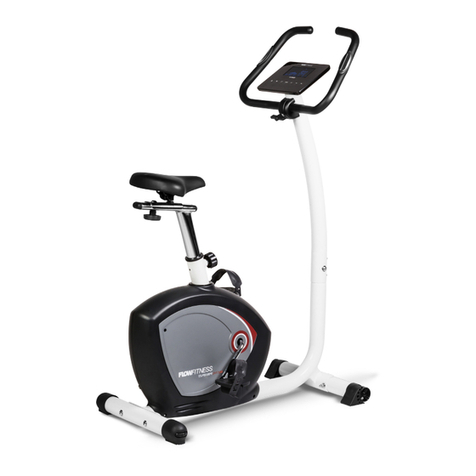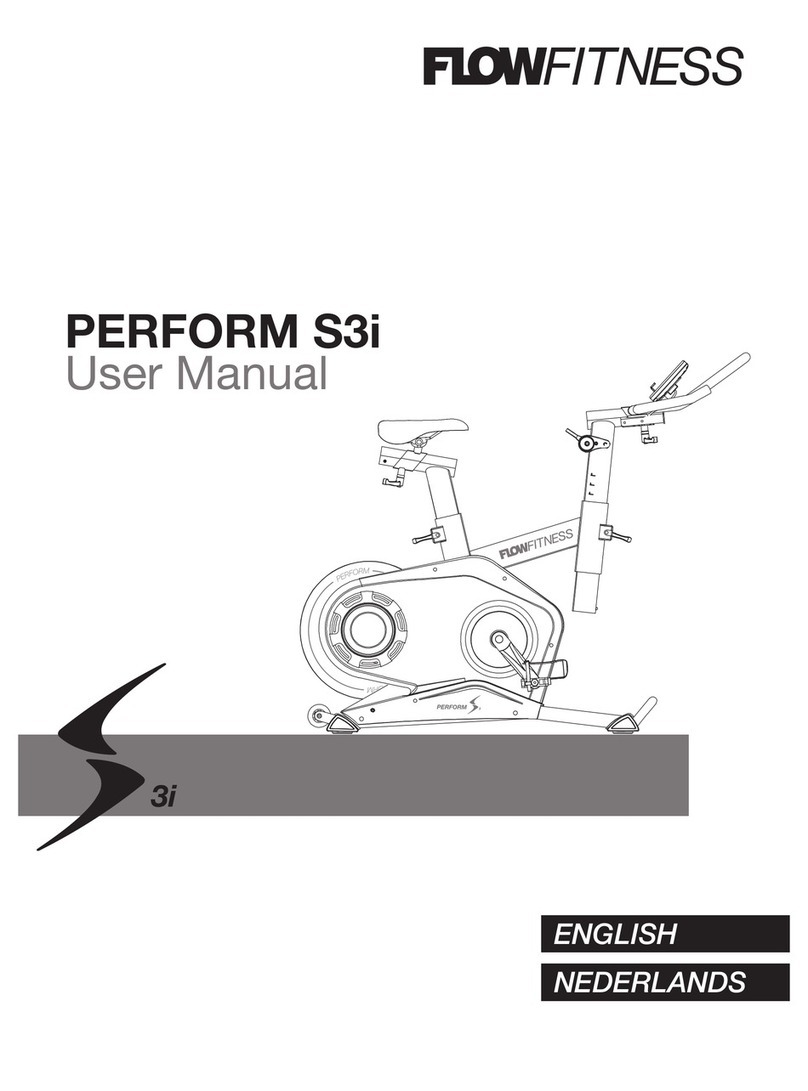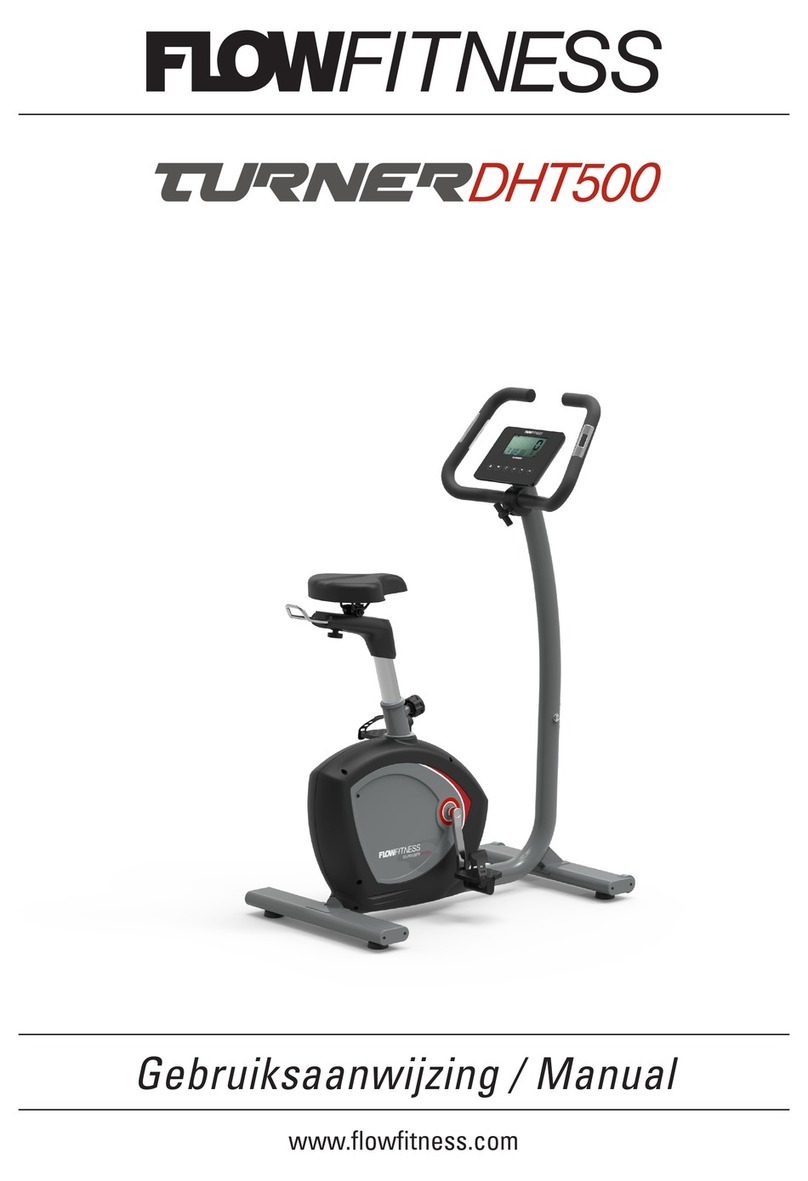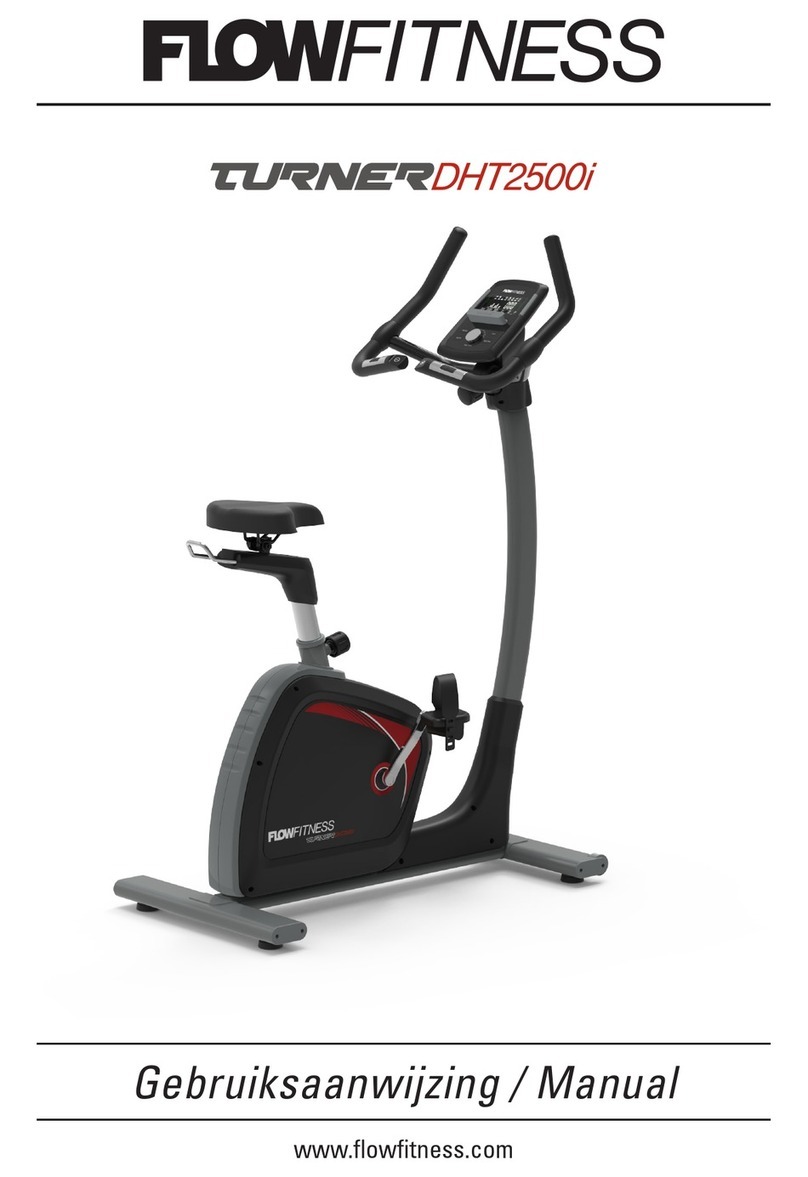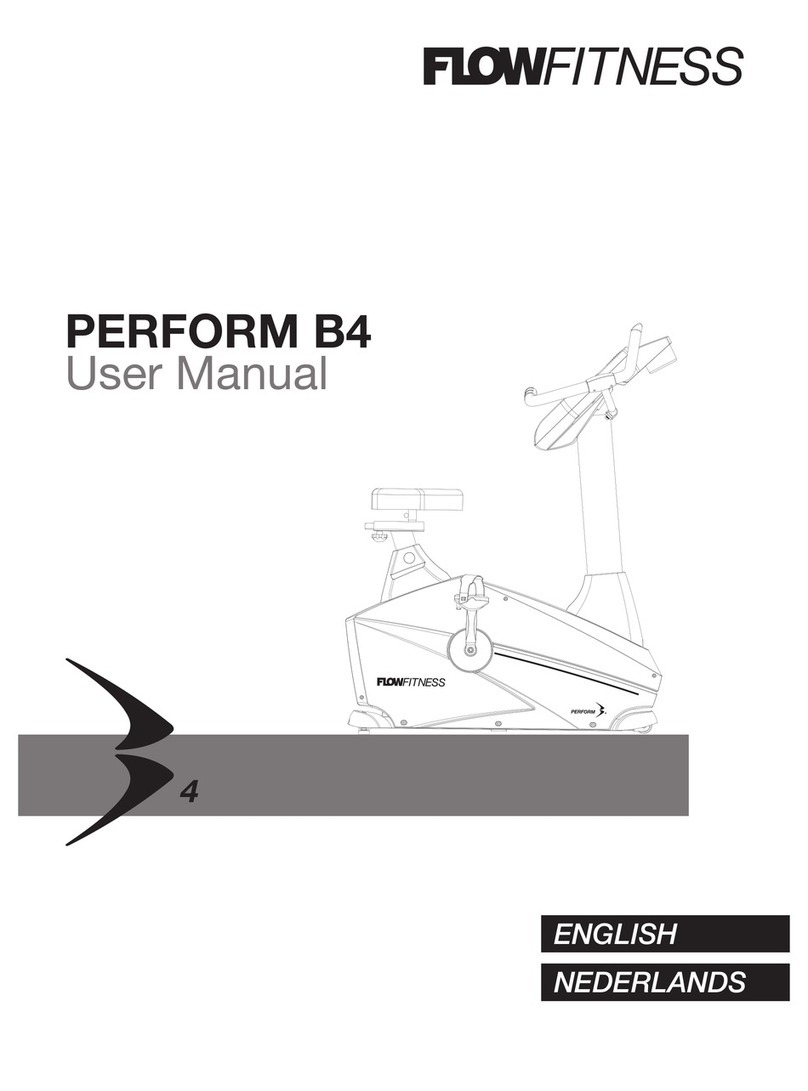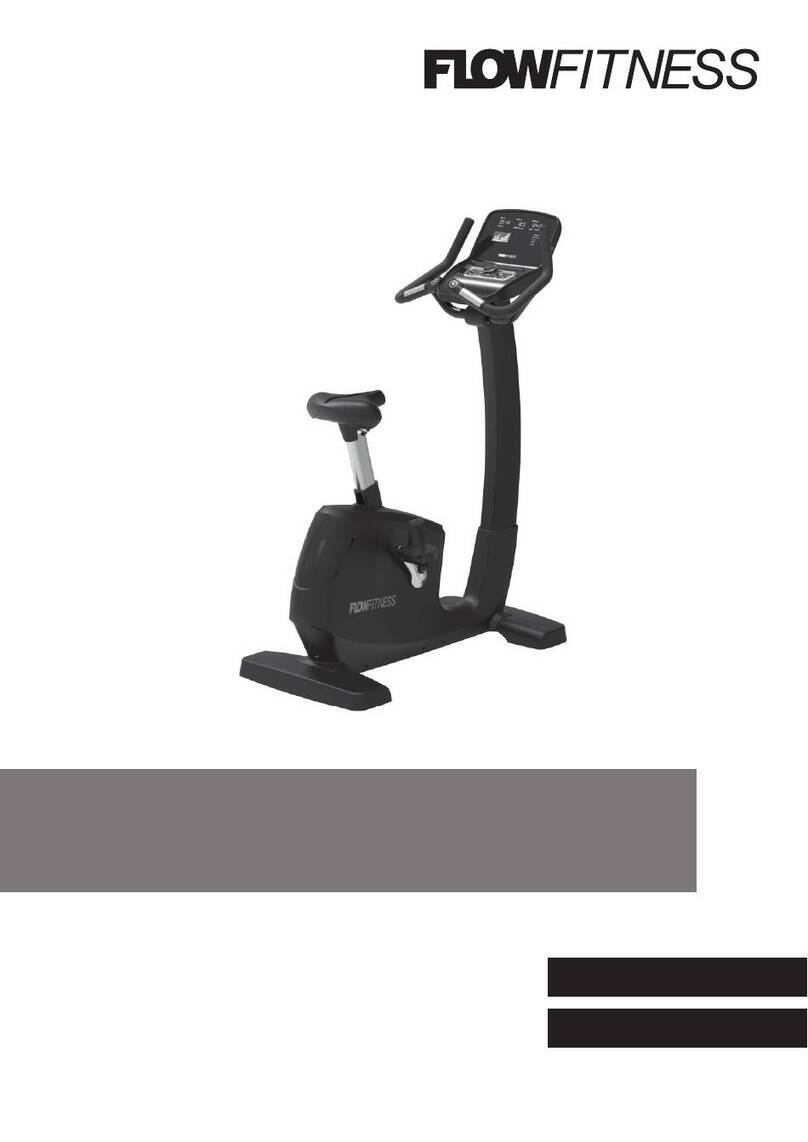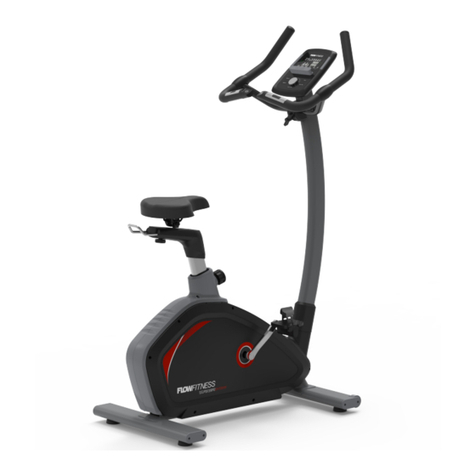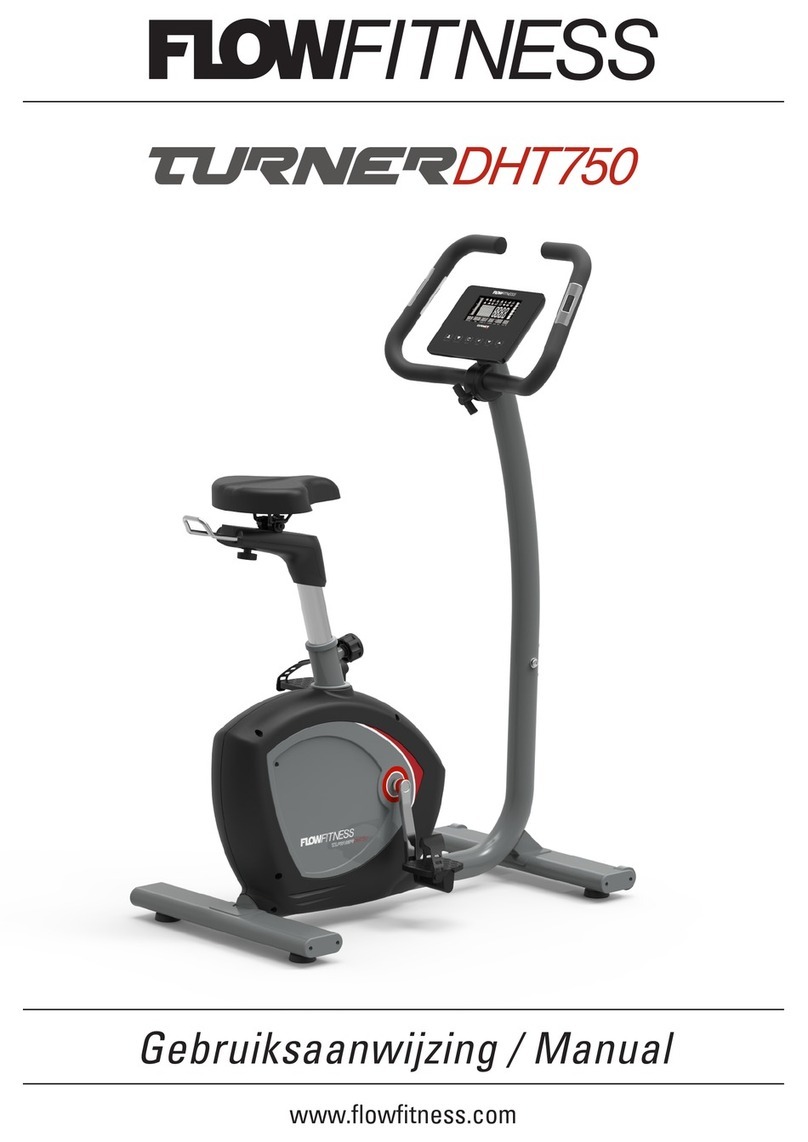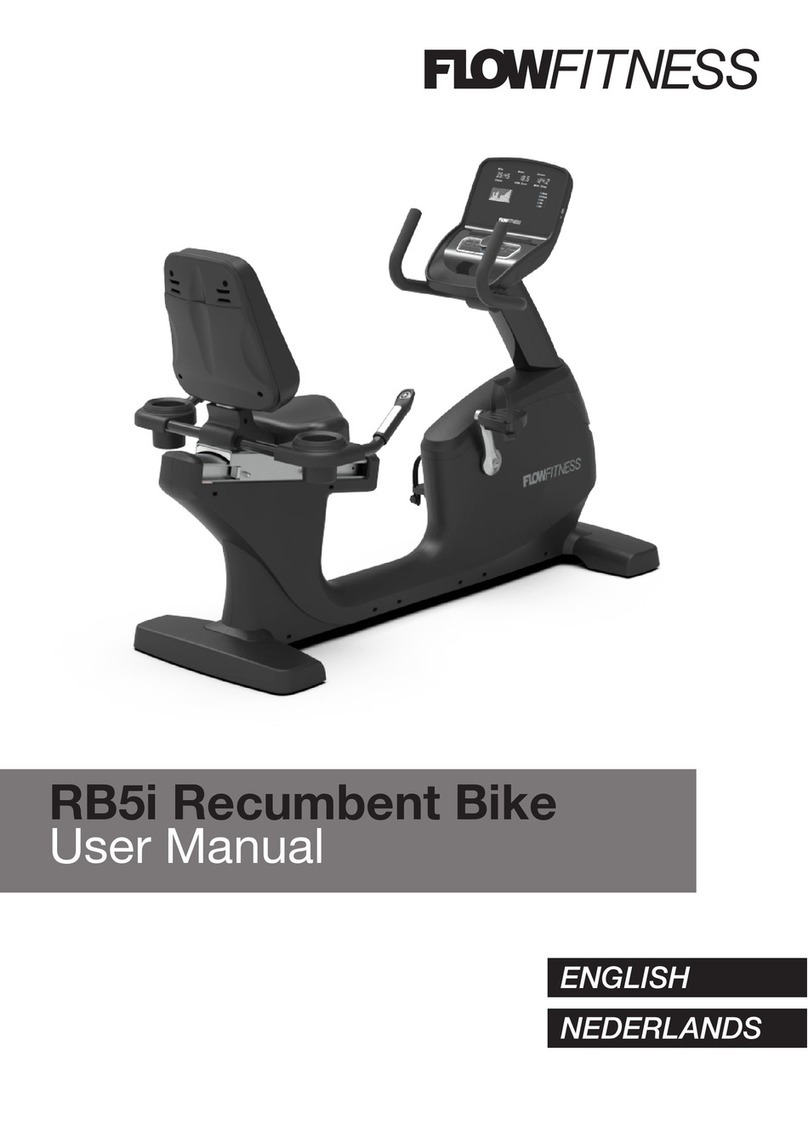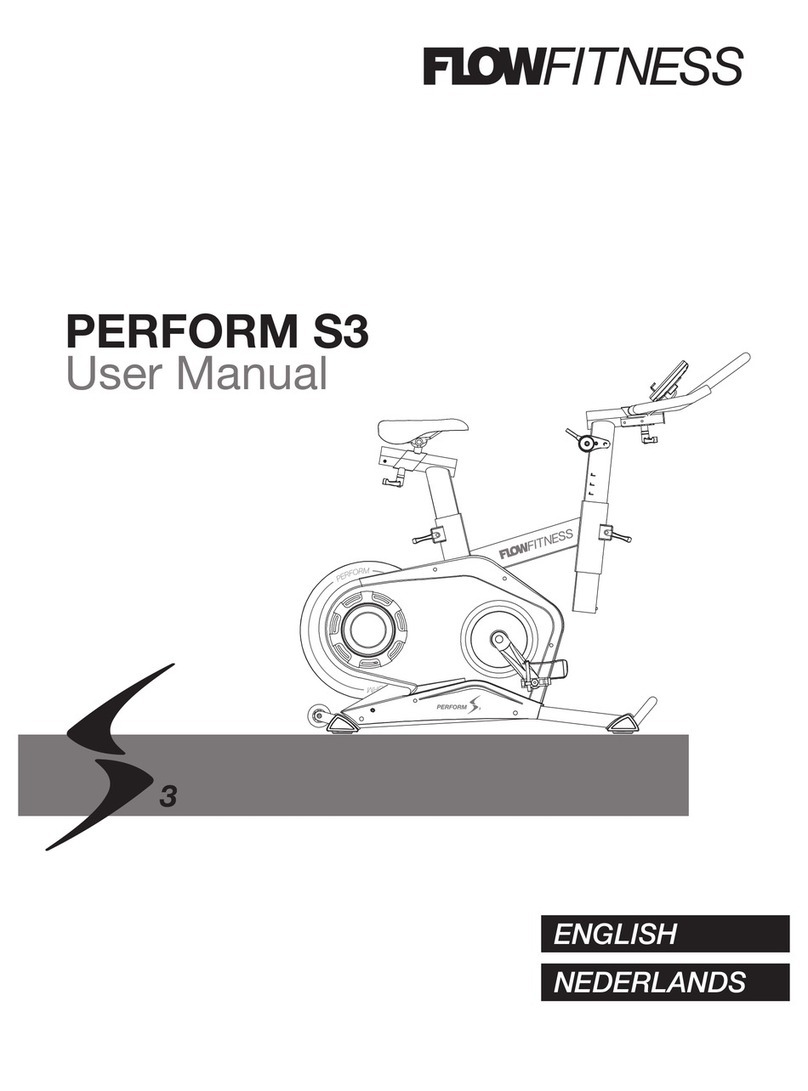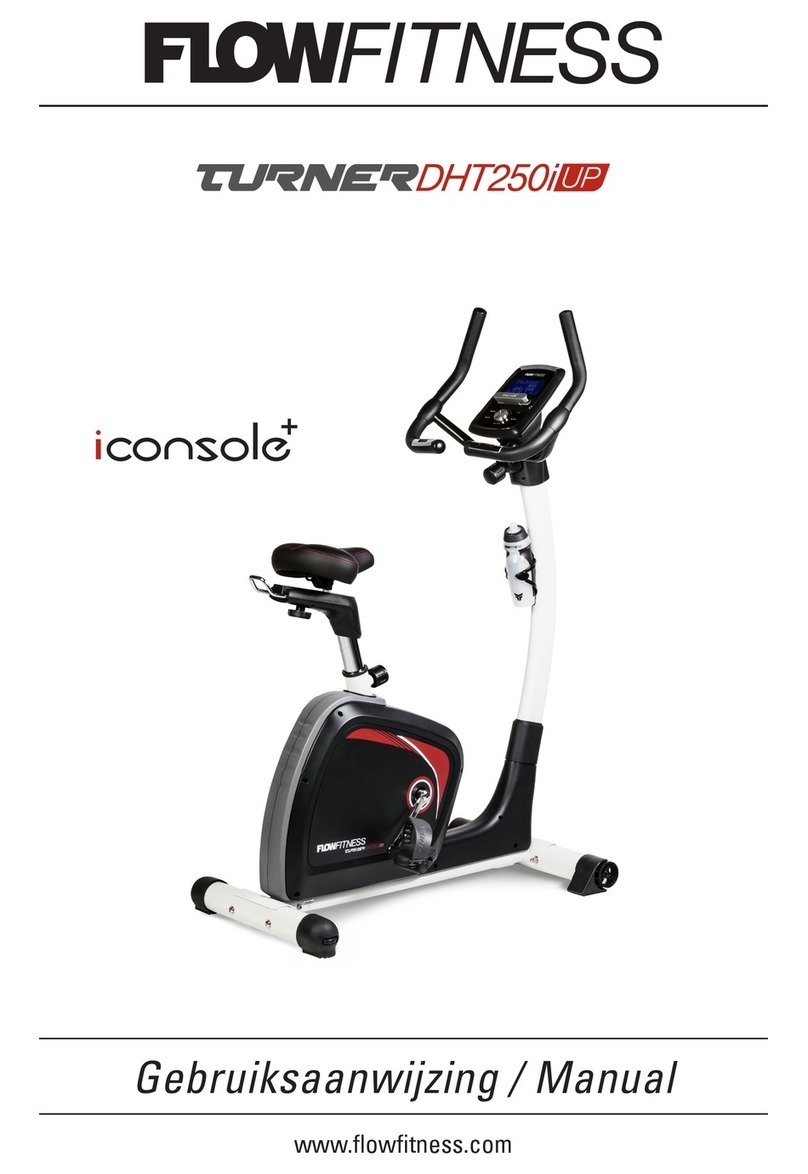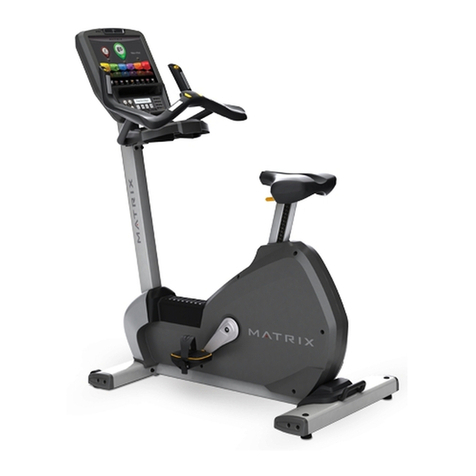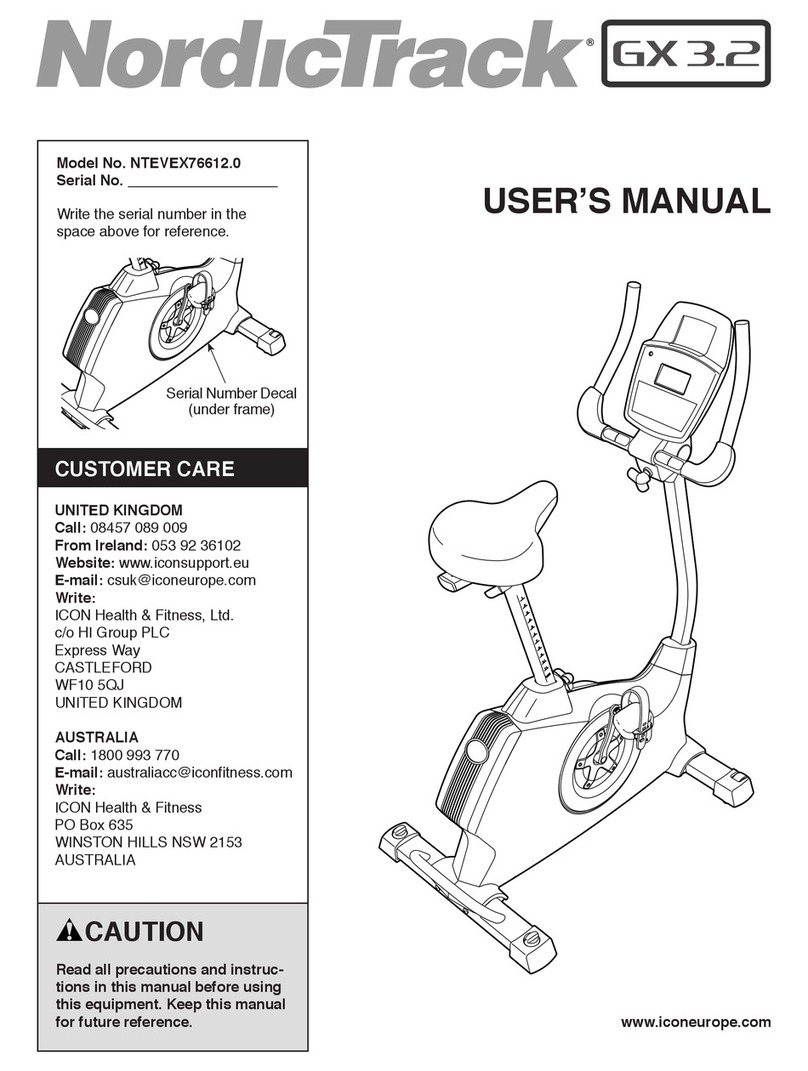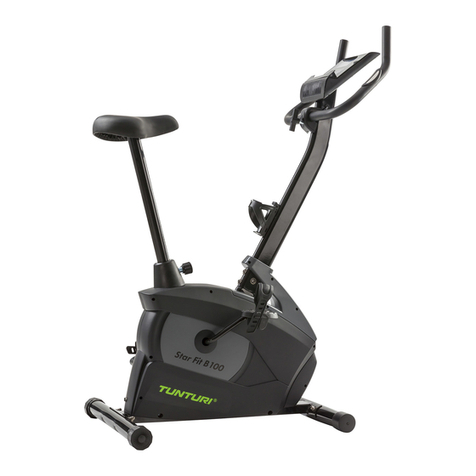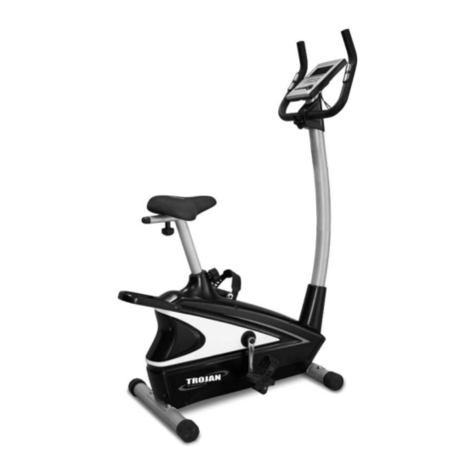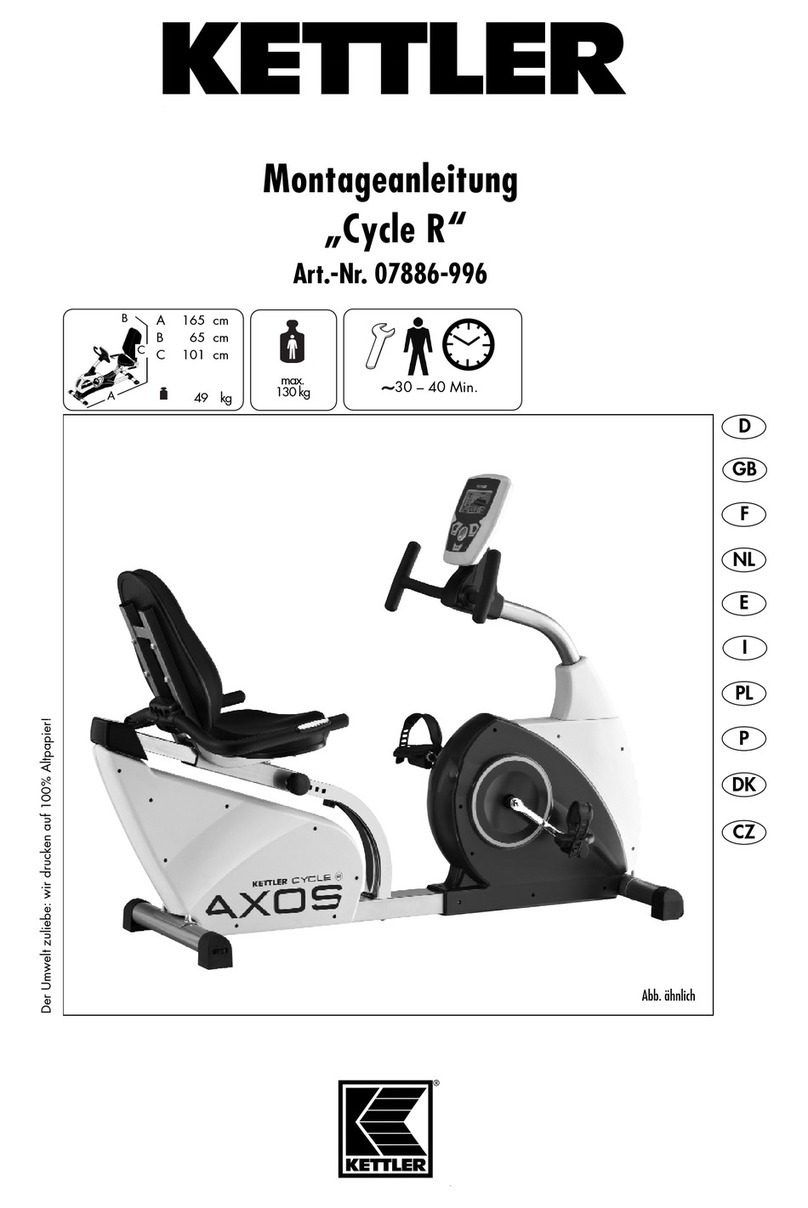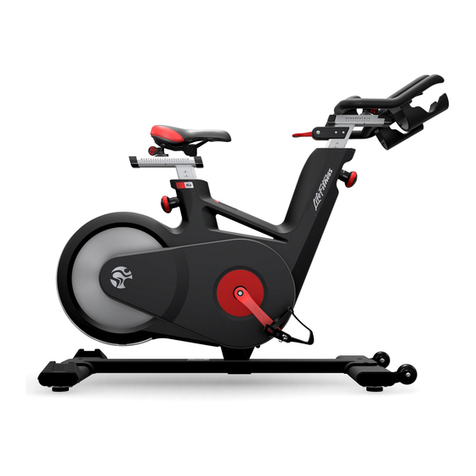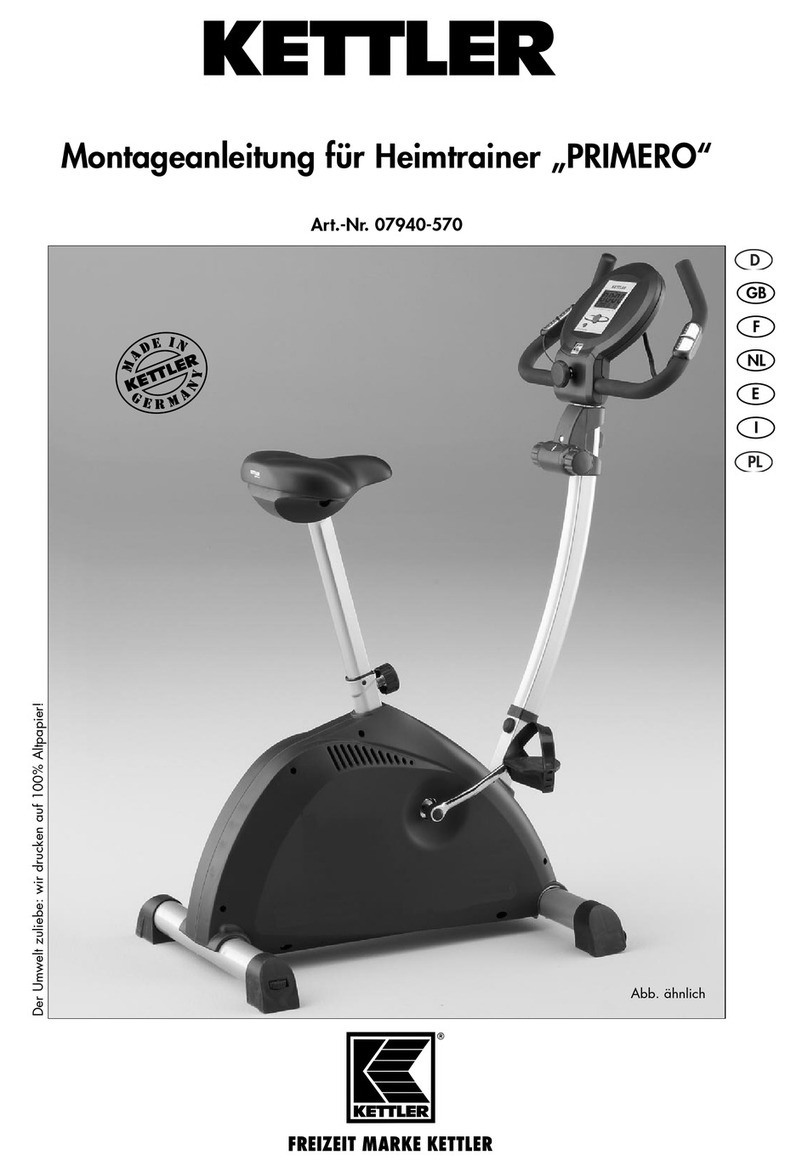
User Manual - Perform X5I 18 |EN
3.FITNESS.
What is tness? Generally it can be described as a tness exercise that causes your heart to pump more oxygen to your
muscles via the blood from your lungs. The harder the workout, the more fuel (oxygen) the muscles require to achieve this
rate of oxygen. The heart has to pump harder to get the oxygenated blood into the muscles. If you have good stamina, your
heart pumps more blood with each heartbeat. The heart will not have to beat that often to transport the necessary oxygen
into your muscles. Your resting heart rate and heart rate during exercise will reduce.
While training it is important to monitor your heart rate. The heart rate is essential for the result of your training. Your
best training heart rate depends rstly on your age. Your maximum heart beat can be determined by this. Secondly, the
most effective heart rate depends on your training goals. If your training goal is to lose weight, then the most effective
training is at 60% of your maximum heart rate. If your training goal is to improve your stamina, then you should train at
85% of your maximum heart rate. The body stores energy in two forms: carbohydrates and fat. When we exercise we use a
combination of these two energy supplies. If the training intensity is at a high level the body will mostly choose the energy
that burns fast: carbohydrates. Since there is a limited supply of these carbohydrates you can’t continue this for a long
period of time. When training at a low intensity the body will mostly
choose to use a long lasting source of energy: fat. Since this is stored in large quantities in the body, you can continue this
kind of training for a longer time.
Below you will nd a schedule allowing you to calculate the best heart rate for your training. In this schedule each age
category has a range that your heart rate should be in during your training. The middle column has the values you should
try to maintain if you want to lose weight. If you want to improve your stamina you should try to maintain the rates in the
right column. For each individual the best way to start training is different. If you have not exercised in some time or are
overweight, you should start your training schedule slowly and gradually increase the level of activity.
TRAINING BY HEART RATE
WHAT IS FITNESS
DETERMINING YOUR TRAININGS GOAL
In the last chapter of this instruction manual you will nd several different training schedules (chapter 5. general
information). You can use these schedules to reach your training goals. The schedules are divided in two phases. The rst
phase can be used for beginners or persons who start training after a long period of inactivity. During this phase the level
of intensity is built up gradually. After six weeks the second phase begins. You can then choose a training schedule to lose
weight or improve your stamina.
Age Losing Weight
(beats per minute)
60%
Improving stamina
(beats per minute)
85%
20 -24 120 - 118 170 -167
25 - 29 117 - 115 166 - 163
30 - 34 114 - 112 162 - 158
35 - 39 111 - 109 157 - 154
40 - 44 108 - 106 153 - 150
45 - 49 105 - 103 149 - 145
50 - 54 102 - 100 144 - 141
55 - 59 99 - 97 140 - 137
60 and older 96 - 94 136 - 133




















